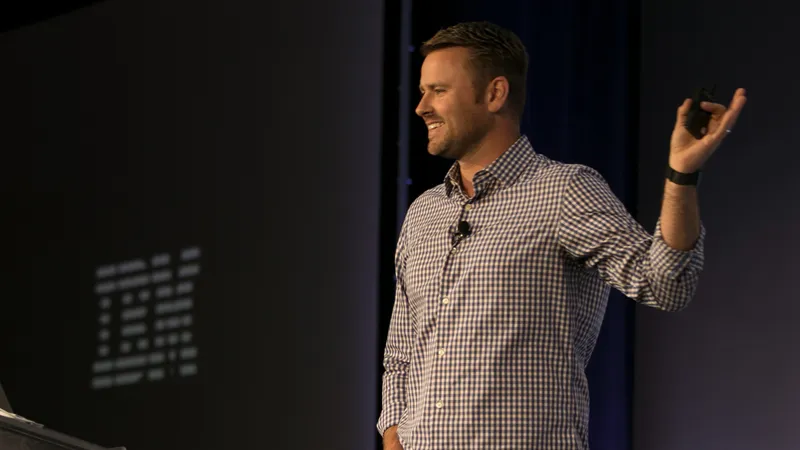In today’s JNUC session, representatives from Apple discussed best practices for adopting Mac and shared tips about how to implement a choice program in any environment. Every organization can move toward a new, modern model that offers employees device choices, and it’s not as difficult as one may expect.
Jeremy Butcher, a product marketing manager from Apple, opened the conversation pointing out that there’s never been a better time to be deploying Macs within a company. He added that while organizations still have conversations around why companies should offer Mac as an option for employees, there’s been a shift in the conversation. Now, he said, more and more organizations are focusing less on the reasons why and instead looking at how to make having Mac as a choice possible.
Butcher then took a look at the success IBM has seen with their own choice program, sharing that users themselves, with their own personal knowledge and love of Apple products, are a huge factor in the success companies’ choice programs.
As stated at last year’s JNUC, more than 75 percent of employees at IBM prefer Mac. Such a high percentage is common across industries, a fact that natively creates a solid foundation for an employee choice program. Butcher touched on some of the cost savings that come from having a workforce that already uses Apple in their personal lives, which includes less training to already fluent Apple users and ultimately a reduction in help desk costs.
But what is the framework for implementing a successful employee choice program? Butcher said that while there are key elements to putting a program in place, IBM successful demonstrated one of the biggest factors: ensuring everyone is on the same page about the vision.
From there, he said setting goals and milestones, defining a project timeline and leveraging the experience the end users already have with iOS will help ensure a successful program implementation.
Of course roadblocks may, and likely will, pop up when first bringing the idea of employee choice to an organization. But this shouldn’t be a deterrent. Instead, Butcher suggests looking deeper into the reasoning behind contradictory opinions and seeking to understand the underlying concerns. It’s upon discovering why they believe something won’t work that the best solutions will likely rise to the top.
Throughout the process of implementing an employee choice program, consider the following: establish a management solution; develop a security strategy; support core productivity apps; modernize legacy apps; and manage the lifecycle of software. Butcher said this last point, while it may vary per organization, is imperative. At the end of the day, Butcher said updating software creates the best end-user experience, which should remain the focus for any company.
All of these steps, when combined together, are the ingredients for a successful employee choice program. But even if one is missing, or isn’t perfect, Butcher said remaining focused on why your company is going down the path of doing choice will continue to guide the implementation progress, no matter the stage it’s in.
by Category:
Have market trends, Apple updates and Jamf news delivered directly to your inbox.
To learn more about how we collect, use, disclose, transfer, and store your information, please visit our Privacy Policy.


